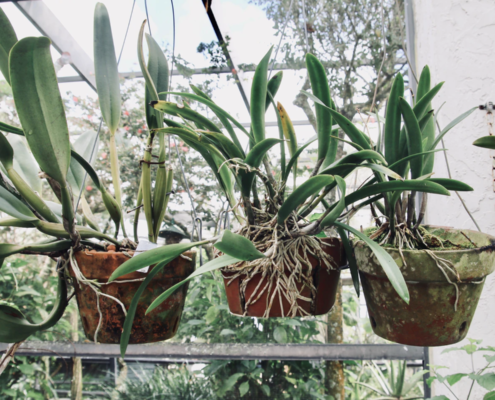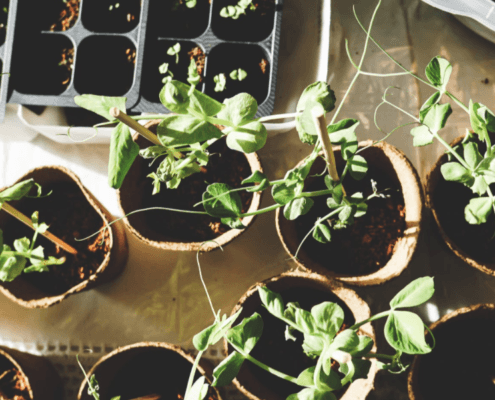8 Ways to Prep Your Garden for Next Year

It may not seem like it, but here in the Northern Hemisphere summer is on its way out. Soon, you’ll wake up to cool, crisp mornings and start searching your closet for the perfect evening sweater. Leaves will turn red and orange, and vegetable gardens will, unfortunately, begin to wither.
Autumn is a slower time of year—one filled with change that lends to reflection and introspection. No matter how cold the winter will be, spring will return, and seedlings will sprout toward the sun. So, why not take a few moments to think back on your gardening experience, your triumphs, and ways to improve next year?
It’s often said it takes three years to truly establish a healthy garden. So if you gave it your all this year, but didn’t harvest as much as you’d hoped, don’t give up. Use your new-found experience and these tips to give your garden another chance:
View this post on Instagram
How to Prepare Your Garden for Next Year
1. Plant fall vegetables.
Maybe you don’t have to give up on this year’s garden after all. The season for tomatoes and peppers may be closing fast, but there are several quick-maturing, cold-tolerant vegetables that grow almost as well in the fall as they do in the spring. Carrots, beets, radishes, lettuce, and peas are just a few examples.
Research the first frost date for your region. Then, make sure the fall crops you plant are expected to reach maturity before this date. Hardy vegetables like carrots, cabbage, and turnips can even survive a few days of light frost.
2.Do some last-minute harvesting.
Harvest as many of your summer crops as you can before your region’s first frost date. Once that first frost strikes, summer plants will quickly die, and any fruit left on the vine will be damaged.
3. Clean up rotting plants.
Once your summer plants have perished due to frost, remove them from your garden. If you let them rot in the soil, they will likely become hotspots for fungi, disease, and microbes that may harm any remaining fall vegetables.
This is especially important for plants that have already contracted diseases or blight, as they often do with age. Make sure to completely clear diseased plant matter from your garden. Throw it away, so the harmful fungi or microbes don’t have a chance to survive the winter and reappear next year. Don’t put diseased or already molding plants into a compost bin.
4. Rejuvenate your soil.
If you need to add some nutrients to your garden soil, it’s a good idea to add a portion of compost and/or organic materials during the fall, before the ground freezes. Then, follow up with more in the spring. This approach is better than fertilizing in the spring only. And fallen leaves are great for adding organic matter to your garden soil.
5. Buy new tools.
You often don’t realize how badly you need something until you’re in a tricky situation. If this was your first or second year trying to grow a garden, you’ve probably had this happen several times. Whether it’s a larger watering can, some stronger tomato cages, or a small pruner, equip yourself today so you’re prepared come spring.
6. Create a compost bin or pile.
Fall is a great time to begin your own compost bin or pile. Fallen leaves, grass clippings, and plant matter from your garden all work great to get it started. And the winter snow will keep it insulated as it decomposes. By next spring, you may even have some compost ready to amend your garden soil. Remember, don’t add diseased plant matter to a compost bin.
7. Consider setting up a drip system.
A lot of new garden problems stem from inconsistent watering. And setting up a drip system for your garden can prevent issues before they begin. A drip system waters your plants slowly and steadily to help moisture travel deep into the soil and nurture strong roots.
Even better, drip systems can also water your entire garden simultaneously. No more going from plant to plant with a watering can. A drip system can be hooked up to your typical garden hose faucet or to an automatic sprinkler system; just make sure you use a pressure regulator to prevent leaks or broken lines.
8. Try growing plants from seed.
If had success starting your garden with seedlings, then perhaps you’re ready to grow your own sprouts from seed. Buying sprouts is great for beginners, but growing from seed is much more affordable. And seed catalogs offer varieties that are difficult to find as seedlings at a grocery store or your local nursery. You’ll want to start germinating your seed in late winter or early spring, depending on the variety. So be ready to get gardening earlier than you did last year.
View this post on Instagram
As summer departs and autumn arrives, make sure to take plenty of moments to think. Be honest with yourself as you reflect on the past year, and valuable lessons will form in your mind. Savor those last tomatoes on the vine and foster hope for next year. It’s always spring somewhere in the world.



Leave a Reply
Want to join the discussion?Feel free to contribute!